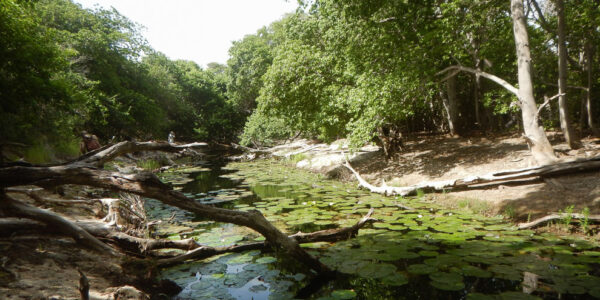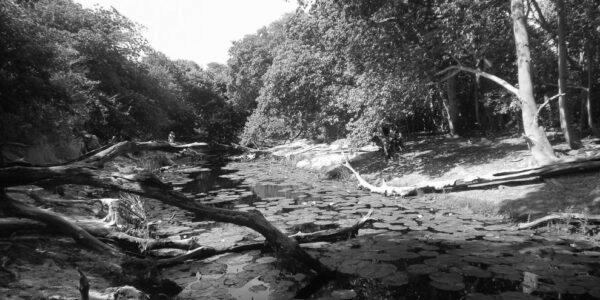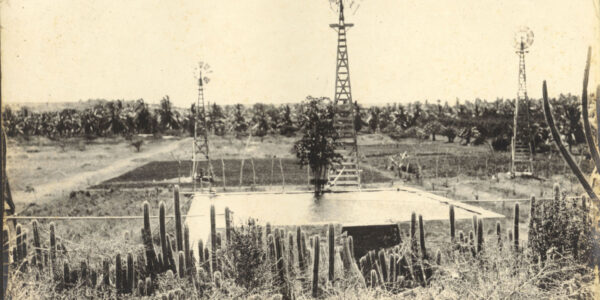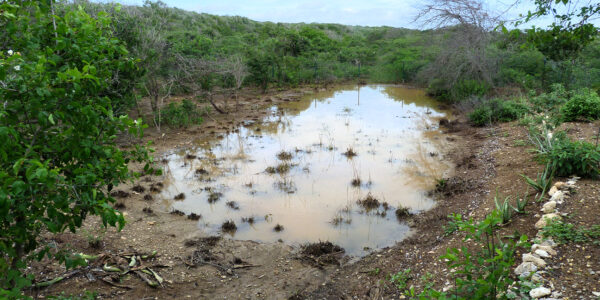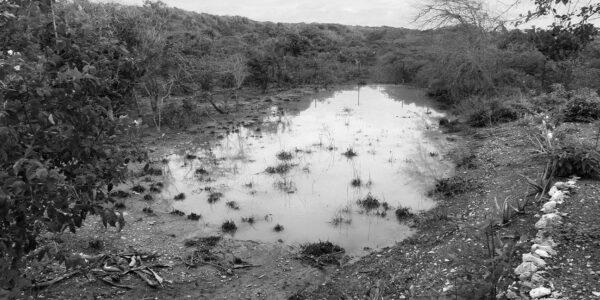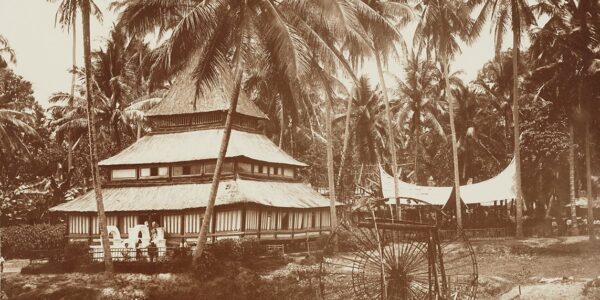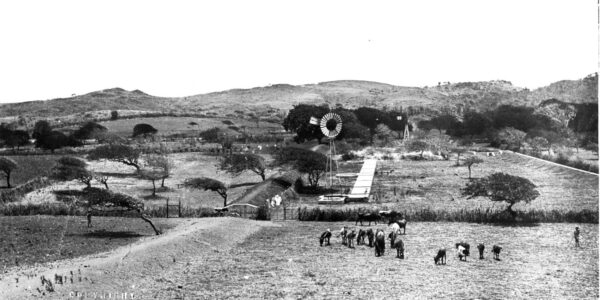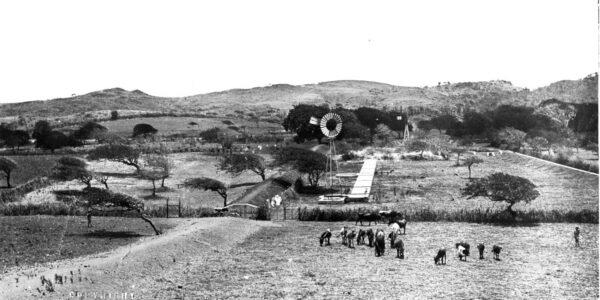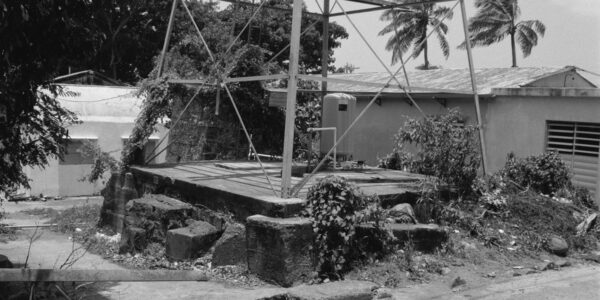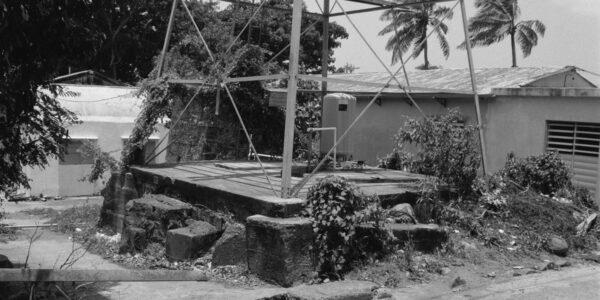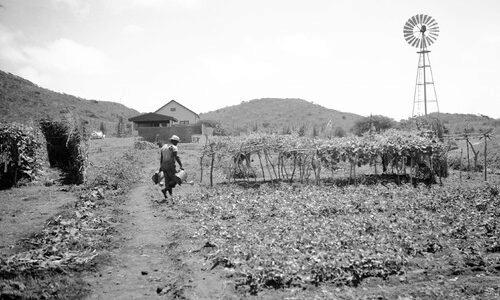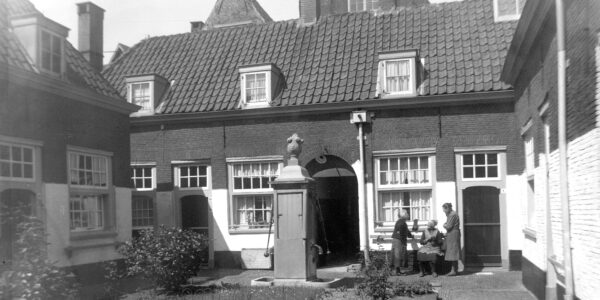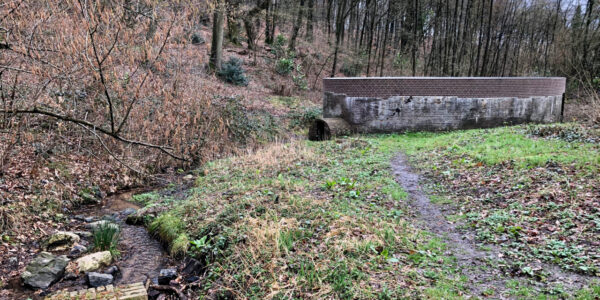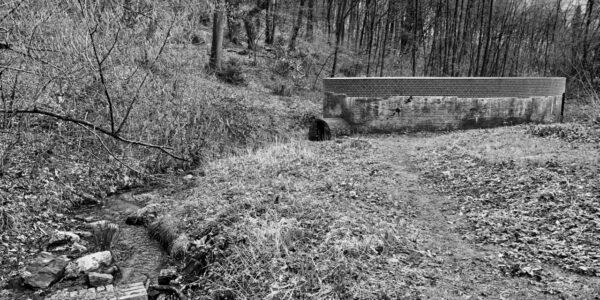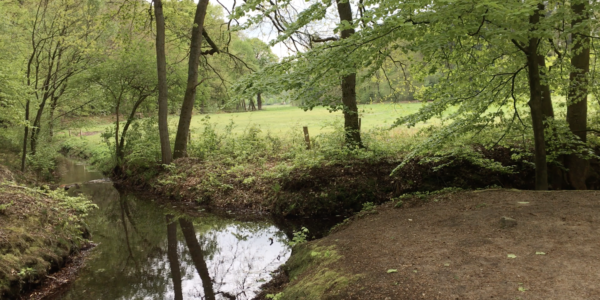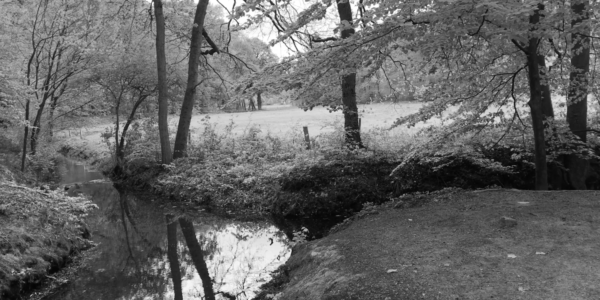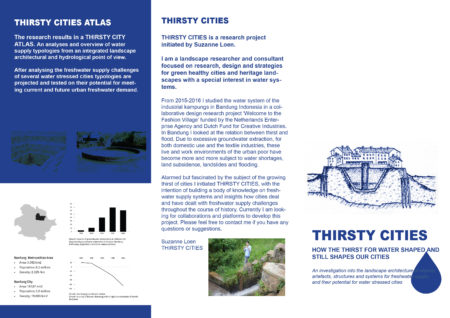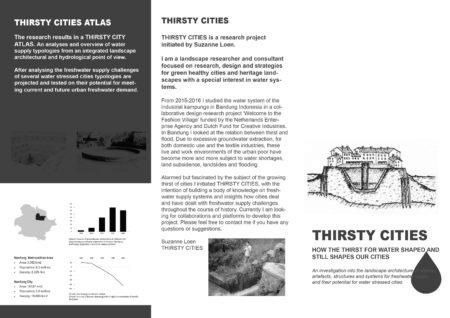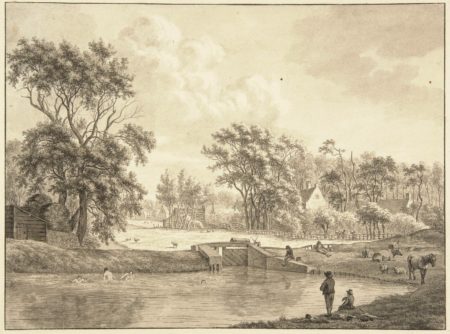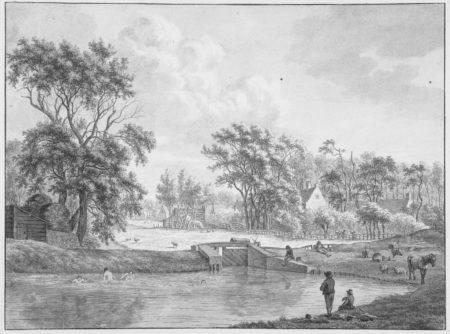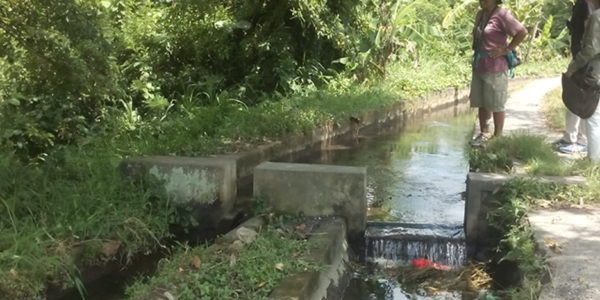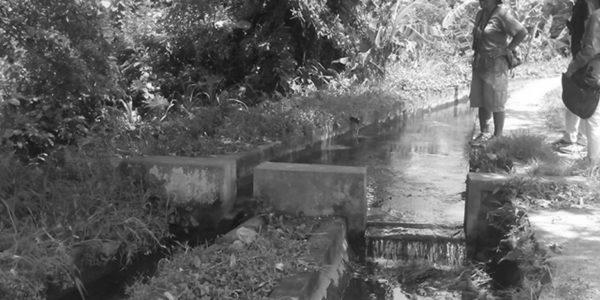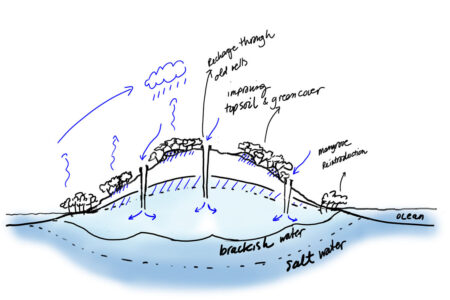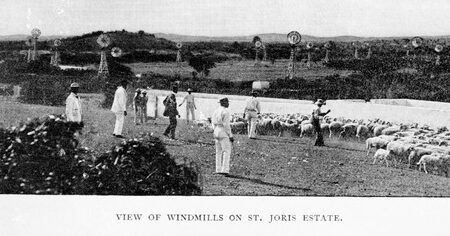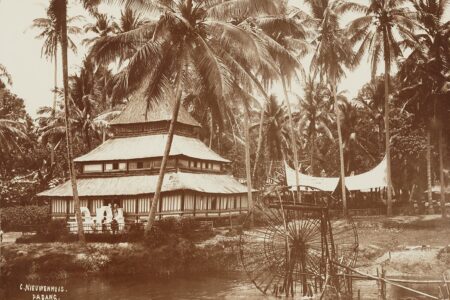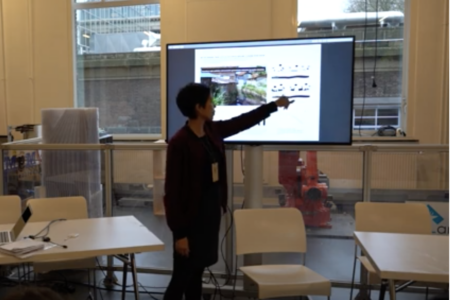The project Thirsty Cities, initiated by Suzanne Loen in 2017, aims to gather knowledge from vernacular and historical freshwater resource management and distribution systems, practices and traditions to develop resilient freshwater systems for the future. The project is a work in progress but will result in a Thirsty Cities Inspiration Atlas.
The Thirsty City projects looks at freshwater resource management from nature- and heritage based point of view with several perspectives:
- From the perspective of context & water resource: Fresh water can be obtained from: Rainwater, surface water, artesian water and shallow and deep groundwater. Depending on the context there will be one or two dominant water resources.
- Small Island (city) States are usually in short supply of surface water and groundwater is often brackish. Rainwater is therefor historically the most important freshwater resource. An example are the vere da pozzo of Venice. A rainwater harvesting system consisting of a network of urban squares catching and directing rainwater to underground cistern.
- Low lying delta cities are often faced with salination and contamination of downstream surface water and shallow groundwater bodies. Rainwater harvesting and (upstream) surface water imports where historically importent. Beer brewers in Amsterdam where a driving force behind the construction of large semi-public regenkelders (rainwater cisterns) in the 18th and 19th century. While seepwater from a peat lakebed supplied the city with drinking water from the 1930s. The practice of rainwater harvesting has all but disappeared in the Netherlands while it could also be beneficial as stormwater retention system. read further
- Upstream elevated cities historically benefitted from their proximity to the source or headwaters of streams and rivers and the presence of artesian springs, lakes and wells. The roots of the city of Bandung and its water intense textile industries can be traced back to the abundance of surface water of the Citarum river and (holy) springs. While today industrial contamination of the very sources of their existence has forced the Bandung communities to divert to deep mining of groundwater with extreme land-subsidence and land slides as a result. read further
- The second perspective looks at the spatial typo-morphology of freshwater management and distribution systems? What systems are generic and which are site specific. How are these systems spatially intertwined with their environment and / or how do they shape the (urban) landscape?
- The third perspective hydrobiographical perspective.
- The last perspective is the synergy between the nature and heritage based systems


